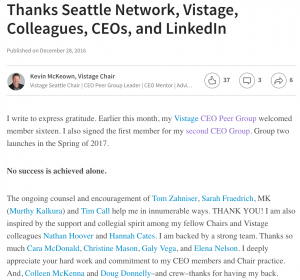In today’s business world there are many steps that lead to success. In the recent years, technological advancements have rerouted the road to success by utilizing the internet. With 78% of the developed world now using the internet throughout their daily life, a business’s success is becoming increasingly reliant on their online presence.

Source: https://en.wikipedia.org/wiki/International_Telecommunication_Union
The online success of a business begins with a website. All-too-often a company’s website completely under-utilized, or worse – nonexistent. While this may have been acceptable 10 years ago, there is absolutely no reason for the internet to be abandoned today. The internet serves many purposes in the business world, but in reality, the internet serves as an enormous marketing tool that helps small businesses compete with large corporations.
Where do you start?
Let’s talk about how to create and successfully utilize a business’s website.
Creating a Website
All great things must start somewhere. Creating a website for a business used to be a mind-numbing task. With the past’s lack of internet functionality and the vast sea of coding knowledge that must go into it, websites have cast a shadow of negativity upon themselves throughout the years. Thankfully this issue has been addressed, and there are many website builders available that will complete a majority of the behind-the-scenes work necessary for a website’s creation. Meaning, with a little planning a website can be built in a matter of hours.
On-Site SEO
Designing a website is one thing, but designing the website with the ability to rank in competitive search is another. Optimizing a website’s on-site content is a leading aspect of how the website will be ranked in the eyes of search engines. It is important to study all forms of on-site SEO practices and implement these tactics correctly within the website. According to MOZ’s “On Page Factors” article, there are four SEO best practices to implement into a website.
- Title Tag – A section of a website’s source code that provides search engines with the subject of the page. These should utilize the keywords for what the page should rank for in search engine results pages.
- URL Structure – Allows search engines to sort out the hierarchy of pages within the website. A URL should provide semantics for both users and search engines, while also utilizing the appropriate keywords for the page.
- On-Site Content – The information within the page that makes it worthy of ranking. On-site content should provide information to back up the subject of the page.
- Image Alt Text – Including the header of the within a supporting image’s alt text will allow search engines to understand what the image is showing the reader.
Content Creation
Once the website is put together and well-optimized to rank in the industry, the success of the business’s website thrives on the content that it delivers. No sane person will use a website that offers nothing to them, and studies have shown that a websites visitors will judge a website within the first four seconds of viewing the page. This means a business’s website must stand out and provide a reason for visitors to stick around – quickly. Many websites miss this entirely, leaving themselves stranded in a wasteland of unsuccessful websites.
Businesses can utilize study their industry to find what questions are being asked, and can then craft content around these questions to post on the website’s blog. This can create the opportunity for a business to create informational content for their industry – driving traffic to the website, and creating a positive light behind their brand. Plus, search engine algorithms will notice the regular on-site updates – making the website a priority when crawling the web for new information.
Social Exposure
Perhaps one of the more prevalent online marketing tactics is social media. This is a great tool to create brand recognition within a wide scope of users, and will help drive traffic and conversions to a website. A study by Market Force Information shows that a large majority of prospecting customers rely on a business’s social media presence when making purchase decisions.
A business should always ensure they are combining their content creation with their social media efforts to maximize help get their website’s content in front of the individuals who are looking for it.
Digital & Social Articles on Business 2 Community(357)
Report Post







